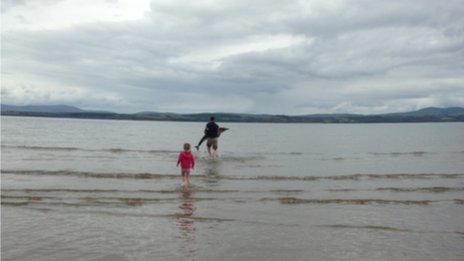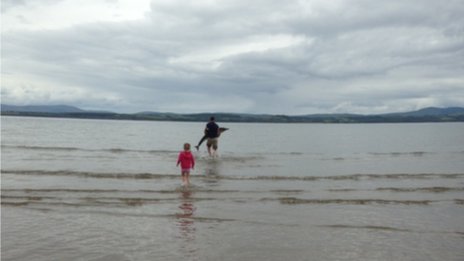The McElroys “were just having a family day out at the beach,” dad Dan says, when they came across a dolphin stranded in the shallows. He told the BBC:
“It was completely beached and must have been lying there for a while, as it was covered in sand and was struggling to breath. It really looked as though it was on its way out.”
And so he decided to help it.
“I carried it out towards the ocean. It was really quite heavy.
“I managed to get it to deep enough water to put it down. It took some time, but eventually it started swimming by itself and at that point I knew it would be OK.”
Dan, it turns out, did pretty well by this dolphin. (Certainly better than we’ve come to expect of tourists with dolphins.) He approached it calmly and actually picked it up and carried it into the ocean, instead of pulling it by its tail. International Dolphin Watch, for what it’s worth, doesn’t recommend that you move a stranded dolphin for the very reason McElroy discovered: “Dolphins are very heavy.”
Here is what you should do if you find a stranded dolphin, according to the Institute for Marine Mammal Studies.
- Call someone who actually knows what they’re doing.
- Don’t move the dolphin. You could hurt it. Definitely don’t drag it across the sand.
- Keep its skin cool and wet.
- But keep water out of its blowhole.
- If it’s on the sand, dig a hole under each of its fins to make it more comfortable.
- Be careful of its tail. Don’t hold it.
In other words, these well-intentioned people did everything exactly wrong:
McElroy sorta did it wrong too, since technically he should have left the dolphin alone and let the experts handle it. But this story seems to have had a happy ending anyway.




